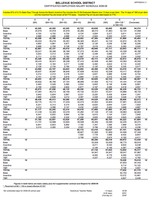Members include:
Abplanalp, Sue, Assistant Superintendent, Elementary Schools
Alexander, Jennifer, President, Chamber of Commerce
Atkinson, Deedra, Senior Vice-President, Community Impact, United Way of Dane County
Banuelos, Maria,Associate Vice President for Learner Success, Diversity, and Community Relations, Madison Area Technical College
Bidar-Sielaff, Shiva, Manager of Cross-Cultural Care, UW Hospital
Brooke, Jessica, Student
Burke, Darcy, Elvehjem PTO President
Burkholder, John, Principal, Leopold Elementary
Calvert, Matt, UW Extension, 4-H Youth Development
Campbell, Caleb, Student
Carranza, Sal, Academic and Student Services, University of Wisconsin
Chandler, Rick, Chandler Consulting
Chin, Cynthia, Teacher, East
Ciesliewicz, Dave, Mayor, City of Madison
Clear, Mark, Alderperson
Cooper, Wendy, First Unitarian Society
Crim, Dawn, Special Assistant, Academic Staff, Chancellor’s Office, University of Wisconsin-Madison
Dahmen, Bruce, Principal, Memorial High School
Davis, Andreal, Cultural Relevance Instructional Resource Teacher, Teaching & Learning
Deloya, Jeannette, Social Work Program Support Teacher
Frost, Laurie, Parent
Gamoran, Adam Interim Dean; University of Wisconsin School of Education
Gevelber, Susan, Teacher, LaFollette
Goldberg, Steve, Cuna Mutual
Harper, John, Coordinator for Technical Assistance/Professional Development, Educational Services
Her, Peng,
Hobart, Susie, Teacher, Lake View Elementary
Howard, James, Parent
Hughes, Ed, Member, Board of Education
Jokela, Jill, Parent
Jones, Richard, Pastor, Mt. Zion Baptist Church
Juchems, Brian, Program Director, Gay Straight Alliance for Safe Schools
Katz, Ann, Arts Wisconsin
Katz, Barb, Madison Partners
Kester, Virginia, Teacher, West High School
Koencke, Julie, Information Coordinator MMSD
Laguna, Graciela, Parent
Miller, Annette, Community Representative, Madison Gas & Electric
Morrison, Steve, Madison Jewish Community Council
Nadler, Bob, Executive Director, Human Resources
Nash, Pam, Assistant Superintendent for Secondary Schools
Natera, Emilio, Student
Nerad, Dan, Superintendent of Schools
Passman, Marj, Member, Board of Education
Schultz, Sally, Principal, Shabazz City High School
Seno, Karen,Principal, Cherokee Middle School
Sentmanat, Jose, Executive Assistant to the County Executive
Severson, Don, Active Citizens for Education (ACE)
Steinhoff, Becky, Executive Director, Goodman Community Center
Strong, Wayne, Madison Police Department
Swedeen, Beth, Outreach Specialist, Waisman Center
Tennant, Brian, Parent
Terra Nova, Paul, Lussier Community Education Center
Theo, Mike, Parent
Tompkins, Justin, Student
Trevino, Andres, Parent
Trone, Carole, President, WCATY
Vang, Doua, Clinical Team Manager, Southeast Asian Program / Kajsiab House, Mental Health Center of Dane County
Vieth, Karen, Teacher, Sennett
Vukelich-Austin, Martha, Executive Director, Foundation for Madison Public Schools
Wachtel, Lisa, Executive Director of Teaching and Learning
Zellmer, Jim, Parent
Much more here.
The Strategic Planning Process Schedule [PDF]
